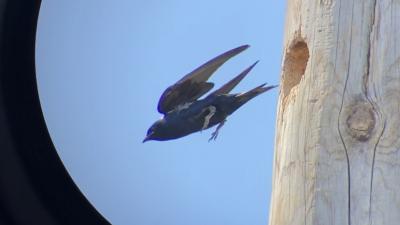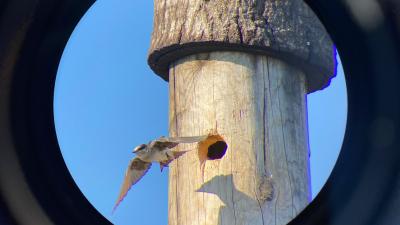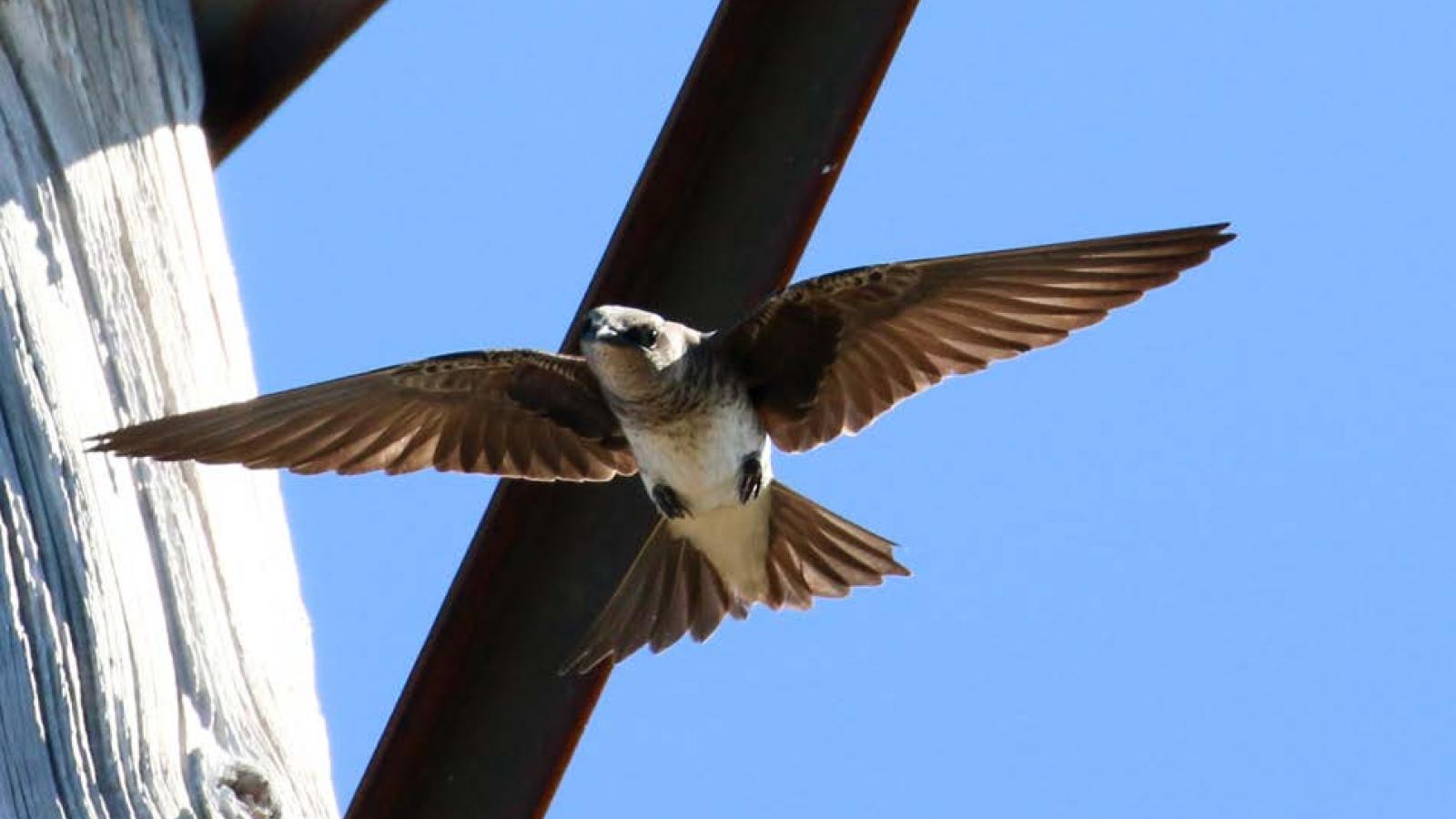The purple martin (Progne subis) is the largest swallow in North America. These aerial insectivores cut a striking profile as they swoop through the sky, performing aerobatics while chasing after dragonflies, butterflies, bees, wasps and other flying insects. The adult males have iridescent, dark blue-purple plumage, while the adult females have duller gray-brown feathers with a hint of blue. Perhaps the coolest thing about this species is their vocalizations, which sound a bit like R2-D2!
The majority of the purple martin's range is in the eastern half of the United States, where this flashy swallow nests almost exclusively in human-supplied housing. Native peoples used to hang hollowed-out gourds so that the birds could use them as little apartments. Today, nest boxes are more commonly used as martin housing. July is the end of their nesting season.
Here on the West Coast, the story is a little bit different. The subspecies of purple martin that resides in California (Progne subis arboricola) is much more hesitant to use the human-made nesting habitats that are so popular with their cousins east of the Rockies. Old snags (dead and dying trees that are still standing upright) and holes excavated in telephone poles by woodpeckers and other bird species are still essential to their breeding success.
Cavity-nesting birds in general are struggling state-wide due to loss of habitat. Old, unsightly trees are often cut down, and choice nesting sites are taken over by the more aggressive European starling. Throughout the state of California, purple martins are listed as a species of special concern, but in Santa Clara County, the situation was even more dire. Many biologists believed that martins were on the verge of extirpation (localized extinction) here!
Imagine our surprise when Midpen natural resource specialists discovered a population of purple martins nesting in Sierra Azul Open Space Preserve! These birds were nesting in historic telephone poles that had been hollowed out by Northern flickers.

While the discovery of the local population is an encouraging sign, Midpen has undertaken significant efforts to help stabilize the local population through habitat restoration. The first attempt to create new habitat for purple martins involved putting out nest boxes, which were created using designs from the Western Purple Martin Working Group. This nesting box design had previously been successful in attracting purple martins in Oregon and Washington. However, for unknown reasons, the martins in Sierra Azul never took to these boxes...so Midpen tried again! Due to the local martins’ preference for natural structures, our Natural Resources department worked closely with staff from our Land and Facilities department to fabricate these types of habitats.

Two housing options were designed to allure to purple martins and to understand their preferences: nesting boxes (now designed after boxes used for tree swallows to understand if that’s a more preferable design) and poles laden with right-sized cavities (mimicking the flicker-made hollows in the telephone poles). Both designs took numerous factors into consideration including cavity measurements, entrance hole size and placement above the floor surface and predator protections.
Confirming staff’s hypotheses, the poles with cavities that most closely emulated naturally found structures were the most popular for this elusive species; purple martins have been confirmed nesting in them for the first time this year! “We want to support this species in the most natural way possible” explained Resource Management Specialist Karine Tokatlian, who leads the monitoring efforts for Midpen. “It is so exciting to see the purple martins taking to these enhanced habitats.”
The exciting development opens the doors for other habitat restoration efforts. Midpen plans to continue monitoring the species and working with partner agencies, sharing expertise on the habitat enhancements that may entice more purple martins to dwell here.

